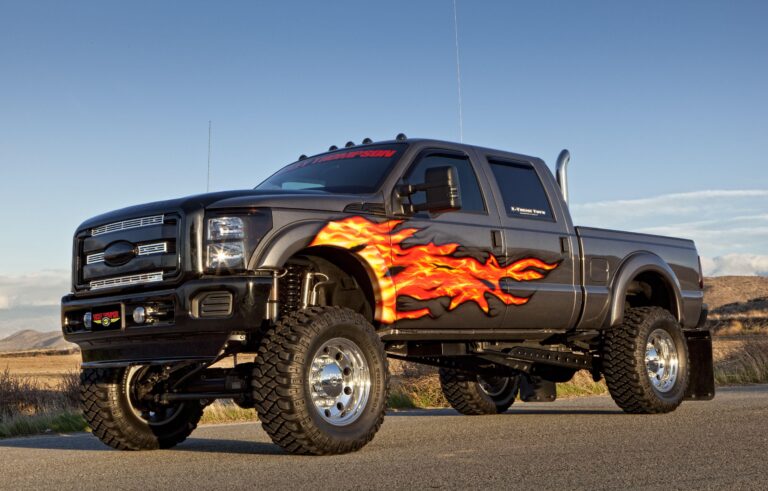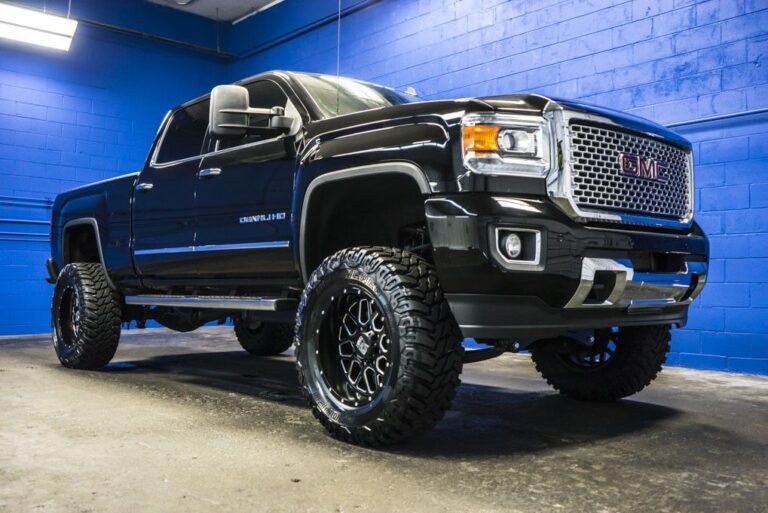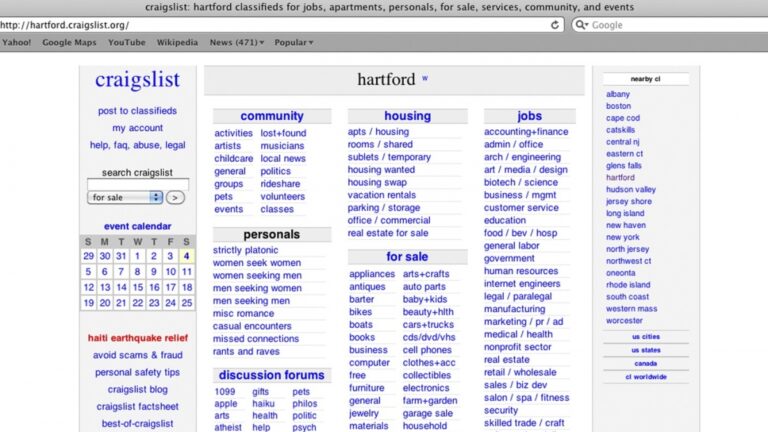Interior Cargo Dimensions: Mastering the 26-Foot Box Truck
Interior Cargo Dimensions: Mastering the 26-Foot Box Truck cars.truckstrend.com
The 26-foot box truck stands as a titan in the world of logistics, moving, and transportation. It’s the go-to vehicle for everything from cross-country household relocations to large-scale commercial deliveries. However, its utility hinges entirely on a precise understanding of its interior cargo dimensions. Far more than just a number on a rental agreement, these dimensions dictate what you can carry, how efficiently you can load it, and ultimately, the success of your transport mission.
This comprehensive guide will delve deep into the interior cargo dimensions of a 26-foot box truck, offering practical insights, tips, and a clear understanding to help you maximize its immense potential. Whether you’re a first-time mover or a seasoned logistics professional, mastering these measurements is your first step towards a smooth and successful haul.
Interior Cargo Dimensions: Mastering the 26-Foot Box Truck
Understanding the "26 Foot" Designation: More Than Meets the Eye
When you hear "26-foot box truck," it’s crucial to understand that this figure almost universally refers to the exterior length of the cargo box. This is the measurement from the very front to the very back of the cargo area, excluding the cab.
However, the interior dimensions—the space you actually have for your items—will always be slightly less. This difference is attributed to several essential structural components:
- Wall Thickness: The walls of the cargo box, including insulation and inner lining, consume a few inches on each side.
- Structural Supports: Internal beams, roof bows, and other structural elements designed for integrity and strength can subtly reduce effective dimensions.
- Manufacturer Variations: While general averages exist, specific dimensions can vary by manufacturer (e.g., Penske, U-Haul, Ryder, Budget) and even by model year. Always check the specific truck’s specifications if possible.

Therefore, never assume the interior length is exactly 26 feet. A realistic expectation is often 6 to 10 inches less than the advertised exterior length.
Key Interior Cargo Dimensions Explained
To truly plan your load, you need to understand the critical interior measurements: length, width, height, and the all-important cubic capacity.
1. Interior Length
The usable interior length is the measurement from the inside of the front wall (bulkhead) to the inside of the rear door. For a 26-foot box truck, this typically ranges from:

- Average Range: 25 feet 6 inches to 25 feet 10 inches (approx. 306-310 inches)
Important Considerations:
- Ramp/Liftgate Well: Many box trucks, especially rental units, include a recessed area at the rear for a pull-out ramp or a liftgate mechanism. This well can sometimes slightly reduce the effective floor length if items cannot fully extend over it.
- Logistics Posts/E-track: While incredibly useful for securing cargo, these vertical rails along the interior walls do not typically impact the overall length.

2. Interior Width
The interior width is where many people encounter surprises due to the presence of wheel wells.
-
Overall Width (Above Wheel Wells): This is the maximum interior width from wall to wall, typically found above the wheel wells.
- Average Range: 96 inches (8 feet) to 98 inches (approx. 244-249 cm)
-
Width Between Wheel Wells: This is the critical measurement for wide items that need to sit flat on the floor.
- Average Range: 48 inches (4 feet) to 52 inches (approx. 122-132 cm)
Key Takeaway: Always account for the wheel wells. Items wider than 48-52 inches will need to be loaded over the wells (if they can be lifted) or positioned strategically to avoid them, which can impact your overall loading plan.
3. Interior Height
The interior height is measured from the floor to the lowest point of the ceiling. This is crucial for tall items like refrigerators, wardrobes, or stacked boxes.
- Average Range: 96 inches (8 feet) to 102 inches (8 feet 6 inches) (approx. 244-259 cm)
Important Considerations:
- Roof Bows/Support Beams: Some trucks have slight inward curves or structural beams at regular intervals along the ceiling. While generally minor, these can slightly reduce the effective vertical clearance at specific points.
- Door Opening Height: The height of the rear door opening might be slightly less than the interior ceiling height. Always check this if you have very tall items.
4. Cubic Capacity
Cubic capacity represents the total volume of the cargo area, typically measured in cubic feet. This is calculated by multiplying the average usable length, width, and height.
- Typical Calculation (using average dimensions):
- Length: 25.75 feet (309 inches)
- Width: 8 feet (96 inches)
- Height: 8 feet (96 inches)
- Estimated Cubic Capacity: 25.75 ft 8 ft 8 ft = 1648 cubic feet
Practical Note: While this theoretical number is helpful, the actual usable cubic capacity will often be less due to inefficient packing of irregularly shaped items, the presence of wheel wells, and the need for access or securing space. Aim to utilize about 80-90% of the theoretical capacity for realistic planning.
Factors Affecting Usable Space
Beyond the raw numbers, several elements influence how much effective space you have:
- Wheel Wells: As mentioned, these are the biggest culprits for reducing usable floor width. Plan to load smaller, less wide items between them, or stack items over them if they are sturdy enough.
- Ramp/Liftgate Housing: If the truck has an integrated ramp that slides out from under the floor or a liftgate assembly that recesses into the floor, this area might not be suitable for heavy, flat items that need full floor support.
- E-track/Logistics Posts: While excellent for securing, if you have extremely wide items that need to sit flush against the walls, the slight protrusion of these tracks can reduce the absolute maximum width by an inch or two.
- Driver’s Cabin Bulkhead: The wall separating the cargo area from the driver’s cabin is usually solid and fixed, meaning no part of the cargo can extend into this area.
Practical Applications & Planning
Understanding these dimensions is not just academic; it’s essential for successful execution:
- Moving Homes: A 26-foot truck is generally suitable for a 3-5 bedroom home. Measure your largest furniture items (sofas, mattresses, refrigerators) to ensure they fit. Plan to disassemble beds, tables, and other items to maximize space.
- Business Logistics: For businesses transporting goods, precise dimension knowledge allows for optimized routes, reduced trips, and efficient inventory management. Knowing the precise width between wheel wells is crucial for palletized loads (standard pallets are 40×48 inches).
- Event Equipment Transport: Large stage elements, sound equipment, or exhibition booths often have specific dimensions that must be accommodated.
- Loading Strategies:
- Heavy Items First: Place heaviest items on the floor, towards the front (closer to the cab) for better weight distribution.
- Utilize Vertical Space: Stack boxes and smaller items securely on top of larger, sturdier ones.
- Secure Everything: Use tie-downs, ropes, moving blankets, and E-track straps to prevent items from shifting during transit.
- Protect Fragile Items: Pad corners and wrap delicate items to prevent damage from vibration or contact.
Tips for Maximizing Space & Efficiency
- Measure Your Own Items: Don’t guess. Before loading day, measure your largest and most awkwardly shaped items.
- Create a Loading Diagram: Sketching out a plan can save significant time and frustration on moving day.
- Disassemble When Possible: Beds, dining tables, and shelving units take up less space when disassembled.
- Load Vertically: Whenever safe and possible, load items upright (e.g., mattresses on their side).
- Distribute Weight Evenly: Avoid putting all the heavy items on one side or at the very back.
- Use Moving Supplies: Dollies, hand trucks, furniture pads, stretch wrap, and moving blankets are indispensable.
- Know Your GVWR: Understand the Gross Vehicle Weight Rating (GVWR) and the truck’s cargo capacity to avoid overloading. This is crucial for safety and legality.
Challenges and Solutions
- Underestimating Space Needed:
- Solution: Always err on the side of caution. If you’re borderline between a 20-foot and 26-foot truck, go for the larger one. Measure, measure, measure! Use online cubic foot calculators for your inventory.
- Irregularly Shaped Items:
- Solution: Load these first and plan around them. Secure them meticulously to prevent shifting.
- Weight Limits:
- Solution: Be aware of the truck’s weight capacity (payload). For a 26-foot truck, this can range from 10,000 to 12,000 lbs (approximately 4,500-5,400 kg). Distribute heavy items to avoid exceeding axle limits.
- Loading/Unloading Difficulties:
- Solution: Utilize the truck’s ramp or liftgate. Invest in proper moving equipment like appliance dollies and hand trucks. Enlist help from strong friends or professional movers.
Estimated Rental Costs for a 26-Foot Box Truck
While "Interior Cargo Dimensions" themselves don’t have a price, the truck that offers them certainly does. Rental costs for a 26-foot box truck can vary significantly based on location, duration, mileage, and additional services. The size and capacity, derived from its dimensions, are primary drivers of its cost.
Here’s an estimated price range for renting a 26-foot box truck:
| Cost Component | Estimated Range (USD) | Notes |
|---|---|---|
| Daily Rental Fee | $39.99 – $99.99 | Varies greatly by provider, weekday vs. weekend, and demand. Local moves often have a flat daily rate plus mileage. |
| Mileage Fee | $0.59 – $0.99 per mile | Most common for local rentals. Long-distance moves often include a set number of "free" miles with additional fees for overages. |
| One-Way Drop-off | $1,000 – $3,000+ | Significant fee for not returning the truck to the pick-up location. Varies by distance and demand. |
| Fuel Costs | Variable | 26-foot trucks are typically diesel or gasoline and have large tanks. Expect low MPG (6-10 MPG). |
| Insurance | $15 – $75 per day | Optional, but highly recommended. Covers damage to the truck or cargo. |
| Equipment Rental | $5 – $25 per item/day | Dollies, furniture pads, tie-downs, hand trucks, etc. |
| Environmental Fee | $1 – $5 | Small, often mandatory fee. |
| Taxes | Variable | State and local sales taxes apply. |
| Deposit | $50 – $200 | Refundable deposit required by most rental companies. |
| Total (Local) | $100 – $300+ per day | For a typical local move with some mileage and basic insurance. |
| Total (Long-Distance) | $1,500 – $4,000+ | Can be significantly higher depending on distance, duration, and one-way fees. |
Note: These are estimates and can change rapidly based on market conditions, rental company promotions, and specific truck availability. Always get a detailed quote from your chosen rental provider.
Frequently Asked Questions (FAQ)
Q1: What’s the actual interior length of a 26-foot box truck?
A1: Typically, the usable interior length ranges from 25 feet 6 inches to 25 feet 10 inches, as the "26-foot" refers to the exterior length.
Q2: Can a king-size mattress fit flat in a 26-foot box truck?
A2: Yes, a king-size mattress (approx. 76 inches wide x 80 inches long) will fit flat across the overall width (96+ inches) of the truck, typically positioned above the wheel wells. It will also fit length-wise.
Q3: How many rooms of furniture can a 26-foot box truck hold?
A3: A 26-foot box truck is generally capable of holding the contents of a 3 to 5-bedroom home, including major appliances and furniture. This is an estimate and depends heavily on how efficiently you pack.
Q4: What is the typical weight capacity (payload) of a 26-foot box truck?
A4: The payload capacity usually ranges from 10,000 lbs to 12,000 lbs (approximately 4,500 kg to 5,400 kg), depending on the specific truck’s make and model. Always check the GVWR and payload sticker on the truck.
Q5: Do all 26-foot trucks come with a ramp or liftgate?
A5: Most rental 26-foot box trucks are equipped with a pull-out loading ramp. Liftgates are less common on standard rental box trucks but are often found on commercial lease or owned fleet vehicles. Always confirm with the rental company if a specific loading aid is critical for your needs.
Q6: How wide are the wheel wells inside the truck?
A6: The space between the wheel wells is typically 48 to 52 inches (4 feet to 4 feet 4 inches). The wells themselves usually protrude about 10-12 inches from the floor on each side.
Conclusion
The 26-foot box truck is an incredibly versatile and powerful tool for moving large volumes of cargo. By thoroughly understanding its interior cargo dimensions—the usable length, crucial width considerations due to wheel wells, and effective height—you empower yourself to plan more efficiently, load more safely, and execute your transportation goals with confidence. Always measure your items, create a loading strategy, and don’t hesitate to confirm specific truck dimensions with your provider. With this knowledge, you’re not just renting a truck; you’re mastering a mobile storage unit designed to handle your biggest challenges.






